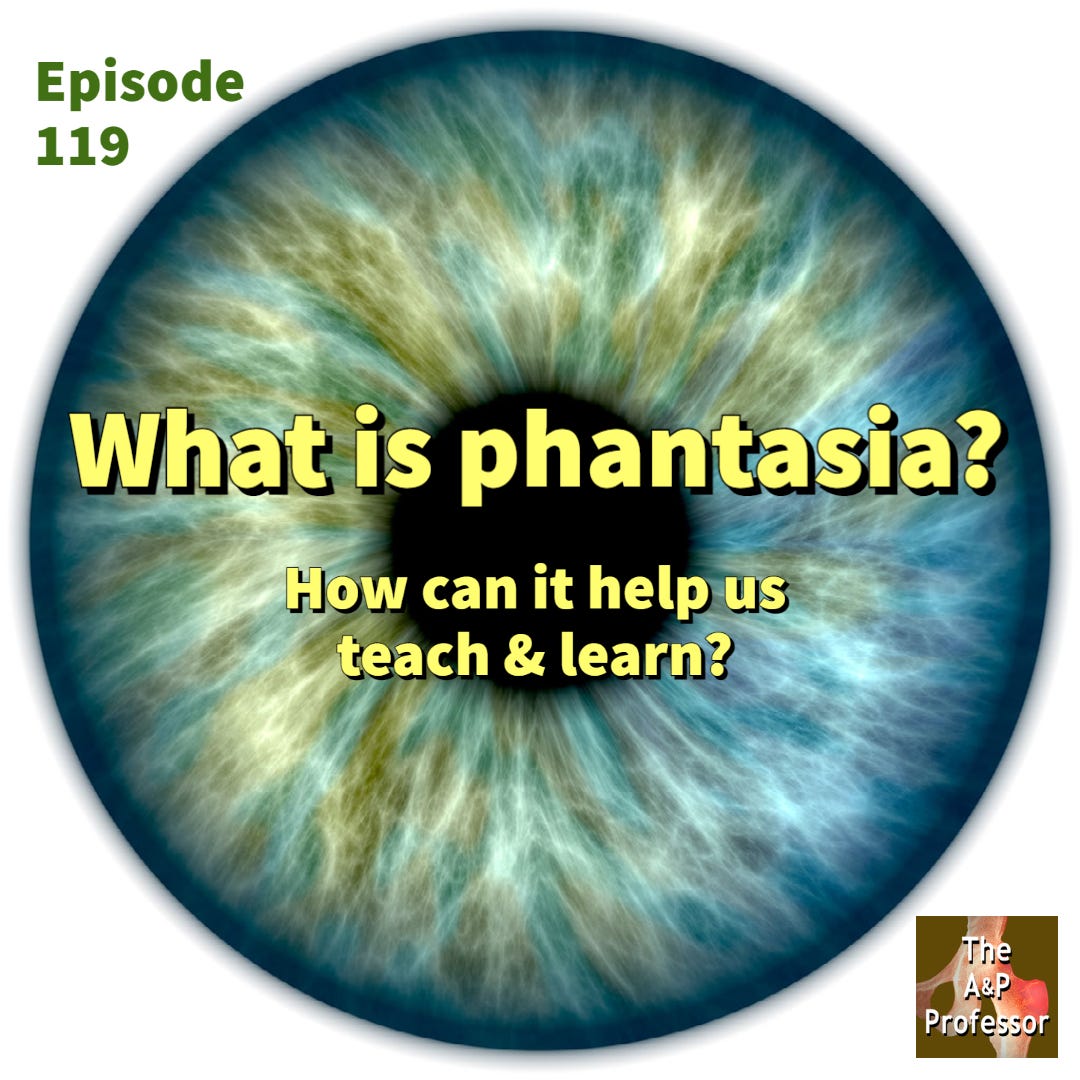Sci-Ed Update 294
Chronic fatigue test, artificial womb, open-note exams (gasp!), aphantasia, protein leverage, hydration facts,
Scientists Develop Blood Test for Chronic Fatigue Syndrome
A new blood test is highly accurate at diagnosing chronic fatigue syndrome, offering for the first time an objective way to identify the sometimes disabling condition that is estimated to affect up to 2.5 million people in the U.S.
A University of Oxford-led research team compared test results among 61 people with chronic fatigue syndrome, 21 people with multiple sclerosis, and 16 people who had no known health problems. They found that the new test is 91% accurate, according to findings published in the journal Advanced Science. The test can also differentiate between mild, moderate, and severe cases of the illness 84% of the time.
Currently, chronic fatigue syndrome is so difficult to diagnose that an estimated 9 in 10 people who have the condition don’t know they have it. The current process to identify the illness involves self-reporting symptoms, questionnaire responses, and other subjective measures.
Read more→ AandP.info/ji5
In Praise of Open-Note Exams
Last spring, as I was preparing for a new semester, I had an epiphany: Closed-book exams seem to unfairly aid students who excel at memorization. So I decided to allow my classes to use notes during exams. My big takeaway: Open-note tests benefit students.
Apart from a desire to not test my students on their ability to memorize, I believed that open-note exams would allow them to practice an essential job skill — integrating information from a variety of sources to solve problems. In the case of my courses, that problem was an exam. I teach journalism, a field built on synthesizing reporting and research into stories. Wouldn’t it be better, I thought, to have students prepare notes (combine, edit, and rearrange) for an exam than expect them to do what few of us have to do in work life — memorize everything?
I made the switch based more on instinct than research. But scholarship on teaching does support the benefits of open-note exams. Some research favors a mixed approach — for example, giving students open-note exams but then following up at the end of the semester with a closed-note exam to test their recall. One study concluded that open-note exams work best at testing higher-level learning, such as problem-solving, and referenced an earlier study that said multiple-choice tests, with or without notes, were a poor way to assess student learning.
As a colleague put it: “I would never give anything but open-note exams. Otherwise, you’re just testing people on their ability to memorize.”
Read more→ AandP.info/pnq
Unlocking Aphantasia – The Mysterious Spectrum of Mind’s Visualization
Visualization abilities range from hyperphantasia, where individuals can create vivid mental images, to aphantasia, where people experience a complete absence of visual imagery.
A study assessed the link between perception and mental imagery in individuals across this spectrum. While aphantasics accurately perceive elements of reality and show no deficits in memory or language processing, they may have a slight defect in phenomenal consciousness, preventing the transformation of visual information into visual mental images.
This understanding paves the way for potential treatments for conditions like PTSD, characterized by intrusive mental imagery.
Key Facts:
Aphantasics can describe objects and people they know but cannot mentally visualize them.
People with aphantasia can perceive elements of reality and remember what they’ve seen, suggesting they might rely on non-visual cognitive strategies.
The Paris Brain Institute’s study is a stepping stone to understanding and potentially treating visualization deficits and conditions like PTSD.
Read more→ AandP.info/prp
Minding the Mind’s Eye in Slides
Mental imagery—the mind’s eye—is not experienced by everyone in the same way. For some, it’s vivid and detailed and for others, it may not be there as a picture at all. It’s a spectrum of abilities among humans, apparently. Phantasia is another name for this ability.
To listen to this episode, click on the player (if present) or this link→ theAPprofessor.org/podcast-episode-119.html
Mindi Fried on Teaching & Learning with Aphantasia
In Episode 133, Dr. Mindi Fried joins us to discuss her experience of aphantasia, the inability to picture thoughts and memories in the mind’s eye, and how that affects how she teaches and learns anatomy and physiology. This is a chat that will increase our awareness of the huge and sometimes invisible diversity that exists among our students.
To listen to this episode, click on the player (if present) or this link→ theAPprofessor.org/podcast-episode-133.html
Protein’s Pull: The Dietary Dynamics Driving Obesity

Humans, like many other species, regulate protein intake more strongly than any other dietary component and so if protein is diluted there is a compensatory increase in food intake. The hypothesis proposes that the dilution of protein in modern-day diets by fat and carbohydrate-rich processed foods is driving increased energy intake as the body seeks to satisfy its natural protein drive — eating unnecessary calories until it does so.
This [new] paper, resulting from the Royal Society Discussion Meeting held in London last October, shows that observational, experimental, and mechanistic research increasingly supports protein leverage as a significant mechanism driving obesity.
The authors outline published studies that span mechanisms of protein appetite to show how the protein leverage effect interacts with industrially processed food environments and with changes in protein requirements across the life course to increase the risk of obesity.
Kevin Patton comment→ someday (in my lifetime, I hope) biologists will actually get a clue as to what’s going on with nutrition and body weight; in the meantime, we continue to flail around, trying to understand
Read more→ AandP.info/c8e
The ultimate guide to hydration and what you really should be drinking
Our notions about what we ought to be drinking are confounded by half-truths and questionable health claims. So, here is a guide to modern hydration, cutting through the hype to discover the science about what we really should be drinking – and how much.
Water is the main constituent of the human body, making up around half of our adult body mass. The body’s balance of water intake and output is tightly regulated to keep the concentration of salts and minerals, or electrolytes, in our blood at a precise level. To prevent dehydration, hormonal and neural mechanisms are activated, stimulating thirst to encourage water intake and increased water reabsorption by the kidneys to decrease water output.
The question of whether we are drinking enough for optimal health has been a matter of contention for decades. You may have heard that we should drink eight glasses of water per day, but this figure turns out to have no scientific basis.
To fully understand how much water is needed by the body each day, last year an international consortium tracked water input and loss in more than 5500 people by giving them water to drink labelled with an isotope of hydrogen. “We found a typical man in their mid-20s, in the US or Europe, will require around 1.5 to 1.8 litres per day, and a typical woman will require around 1.3 to 1.4 litres,” says John Speakman at the University of Aberdeen, UK. “These are just averages, so if you’re active and out a lot in hot weather, you will need more than 2 litres.”
Read more→ AandP.info/itl
Human trials of artificial wombs could start soon. Here’s what you need to know

…researchers at CHOP are seeking approval for the first human clinical trials of the device they’ve been testing, named the Extra-uterine Environment for Newborn Development, or EXTEND. The team has emphasized that the technology is not intended — or able — to support development from conception to birth. Instead, the scientists hope that simulating some elements of a natural womb will increase survival and improve outcomes for extremely premature babies. In humans, that’s anything earlier than 28 weeks of gestation — less than 70% of the way to full term, which is typically between 37 and 40 weeks.
The CHOP group has made bold predictions about the technology’s potential. In another 2017 video describing the project, Alan Flake, a fetal surgeon at CHOP who has been leading the effort, said: “If it’s as successful as we think it can be, ultimately, the majority of pregnancies that are predicted at-risk for extreme prematurity would be delivered early onto our system rather than being delivered premature onto a ventilator.” In 2019, several members of the CHOP team joined a start-up company, Vitara Biomedical in Philadelphia, which has since raised US$100 million to develop EXTEND. (Flake declined to comment for this article, citing “conflicts of interest” and “restrictions on proprietary information”. His co-authors on the 2017 paper did not respond to Nature’s request for comment.)
The US Food and Drug Administration (FDA) will convene a meeting of independent advisers on 19–20 September to discuss regulatory and ethical considerations and what human trials for the technology might look like.
Safety questions won’t be the only ethical concerns. The development of artificial wombs represents a “big transformational leap” that “solves lots of issues”, says David. But, she adds, “it also opens up a whole new slew of issues”. After the 2017 study1 generated extensive media coverage, fears spread that artificial wombs could one day replace pregnancy.
But researchers discount these concerns. This idea “is so far in the distant future that it’s not worth discussing its implications in relation to the current technology”, Werner says.
Read more→ AandP.info/689








